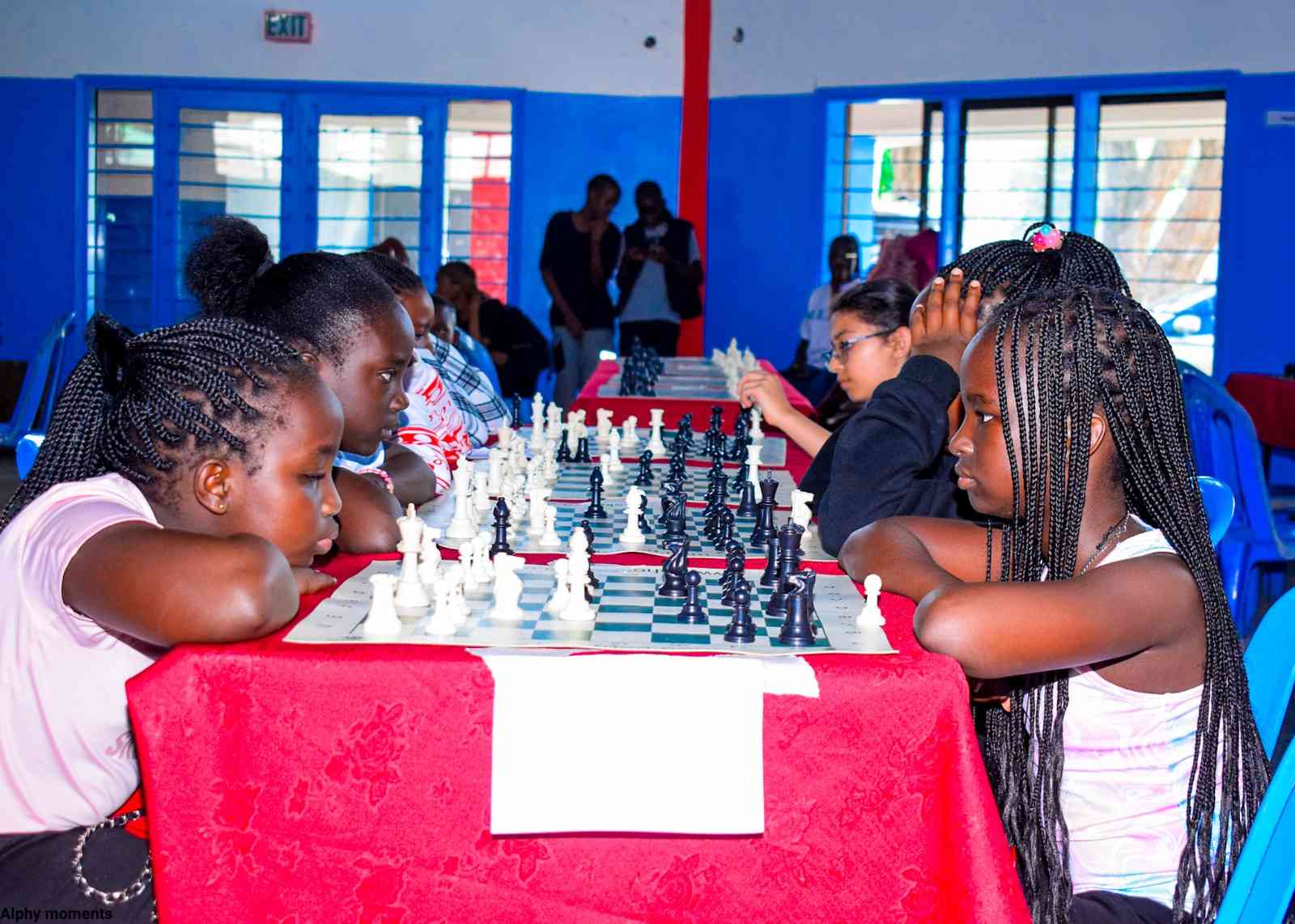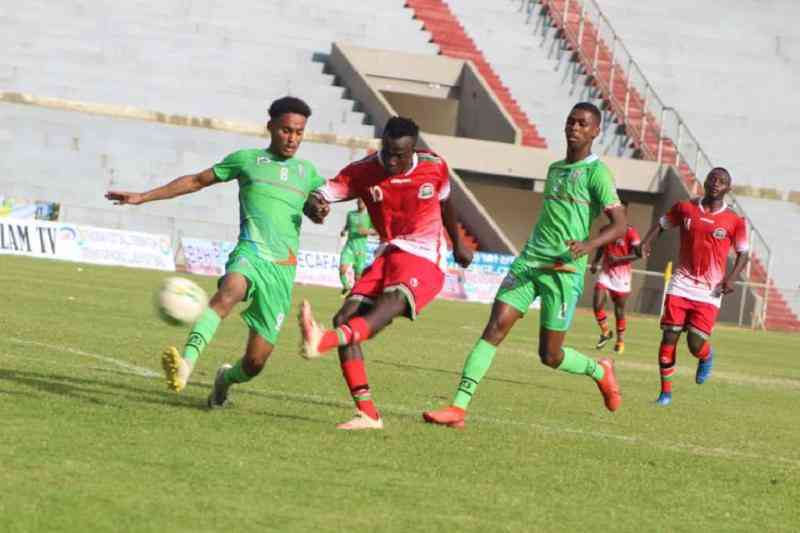 |
|
Mama Esther Ng'etich (left) and Mama Grace Ng'etich, both
descendants of one of the last known Laibons. [PHOTO: ABENEA
NDAGO
|
By Abenea Ndago
Kisumu County, Kenya: The name ‘Kibinot arap Rongoei’ nearly brings tears to the eyes of Mr Samuel Ng’etich, a resident of Songhor Village in Muhoroni Constituency. It is the name of his late grandfather, one of the last known laibons, who now rests in a small grave marked with three ordinary stones in a lonely corner near a hill. They buried him there in 1979 when he was 80.
Samuel is a second-generation member of the Talai clan of Songhor Settlement Scheme (counting from Laibon Rongoei) whose misery can be traced to 1903. That was the year the British colonisers reached what is today Kericho Town.
“Laibon Rongoei had been born in 1899,” says Mzee Elly Siglai, a descendant of the Talai clan, and who now lives in Kericho.
“His mysterious powers were widely known even by our neighbours, the Luo.”
The Talai clan traces its history to Koitalel arap Samoei, the Nandi Orkoiyot who was beheaded by the British in the North Rift.
The other laibons from Kericho who faced the wrath of the British colonisers were Kipchomber arap Koilegen, Kiptonui arap Boisio, and Kibuigut. These three were deported to Kikuyuland due to their rebellion against British rule. The remaining Talai of Kericho – numbering around 700 people – were then banished to Gwassi in Homa Bay County, where they suffered from 1934 – 1962. They later settled in Kablilo, Sigowet-Soin, Kiptere, Ainamoi, Belgut, and even Emgwen.
Mzee Siglai narrates, “We the Talai came from the Maasai. That is why we call our military and spiritual leaders the ‘Laibon,’ which is not very far from the Maasai ‘Oloiboni.’ We identify with the lion, which we call ‘Ng’etundo.’”
Samuel’s mother Esther Ng’etich says she was born in Gwassi in the 1940s, during the Talai exile, before she was married to the late Kipsiele Ng’etich, one of Laibon Rongoei’s sons. After 1962, she remembers settling around Nyakach Koguta in today’s Nyakach District, and then in Muhoroni where the Luo were their most treasured neighbours.
“In Muhoroni,” she recalls, “the father of our husband used to receive most of his visitors from the land of the Luo. They brought bananas, and sometimes groundnuts, and many such foods to our home whenever they came to see mzee.”
Mama Esther says that their family did not stay in Muhoroni for long. They would soon move to Kablilo in the Rift Valley, and then to Songhor Settlement Scheme in the 1960s, where the Luo would remain their neighbours to date.
“My husband’s father knew how to relate with his neighbours,” she says. “They would come and consult him about their problems. And he could foretell if a visitor was coming. He would say: ‘Catch that goat and slaughter him. A visitor is coming tomorrow.’ And the following day you would see a visitor. He could also tell you whether your journey would be fruitful or not. He used tel tel (the woodpecker) and akuru (the pigeon) to foretell someone’s journey.”
There are two explanations to how the Talai of Songhor found themselves at the foot of ‘God Laibon’ (Dholuo for ‘Laibon’s Hill’) in those early years.
“We heard that our grandfather Laibon Rongoei was a good friend of Mzee Jomo Kenyatta’s,” says Samuel, “and it is rumoured that he gave to the first president the flywhisk. So Kenyatta gave him a piece of land to settle on in Songhor. But our grandfather foresaw that the land would become a burial place for dead people, so he asked for another piece of land, and he was brought here, registration number LR 3601.”
Stay informed. Subscribe to our newsletter
The other version is that of Mzee Remjius Anditi, who thinks the Talai became their neighbours due to Laibon Rongoei’s mysterious powers during the years of sizzling politics in Muhoroni Town.
“There was always rumour in Muhoroni, that a powerful Laibon had arrived from Gwassi those years in the early 1960s,” he recalls. “It is said that a certain Luo politician consulted Laibon Rongoei to defeat his rival for him. The promise was a piece of land to settle on. Of course the Laibon did his work, and the politician settled him.”
Yet the Talai land problem has never come to an end ever since the 1934 exile. Mzee Siglai remembers that, when they arrived in Kericho back from Gwassi, they found that all their land had been grabbed by other Kipsigis clans who viewed them as foreigners who were not supposed to return home.
“We have never found a place to call home,” he regrets, “no wonder we are scattered everywhere in numerous constituencies. As late as 2010, the Lands Minister James Orengo resettled us on 518 plots in Kericho, but we have since been kicked out by powerful people, who then gave these lands to their relatives. We do not know who to turn to.”
Laibon Kibinot arap Rongoei fell while bathing in a nearby stream and broke his thigh-bone, a wound he died from in 1979. But at Songhor, the Talai move on with their lives. They all speak both their mother-tongue and Dholuo, although their children are more fluent in the latter than in their native tongue.
“We share many things with our Luo neighbours,” Samuel observes. “My sister Jane Chepkemoi is married to a Luo near Lambwe Valley in Homa Bay County, and I sometimes visit her. We are not worried at all.”
 The Standard Group Plc is a
multi-media organization with investments in media platforms spanning newspaper
print operations, television, radio broadcasting, digital and online services. The
Standard Group is recognized as a leading multi-media house in Kenya with a key
influence in matters of national and international interest.
The Standard Group Plc is a
multi-media organization with investments in media platforms spanning newspaper
print operations, television, radio broadcasting, digital and online services. The
Standard Group is recognized as a leading multi-media house in Kenya with a key
influence in matters of national and international interest.
 The Standard Group Plc is a
multi-media organization with investments in media platforms spanning newspaper
print operations, television, radio broadcasting, digital and online services. The
Standard Group is recognized as a leading multi-media house in Kenya with a key
influence in matters of national and international interest.
The Standard Group Plc is a
multi-media organization with investments in media platforms spanning newspaper
print operations, television, radio broadcasting, digital and online services. The
Standard Group is recognized as a leading multi-media house in Kenya with a key
influence in matters of national and international interest.









